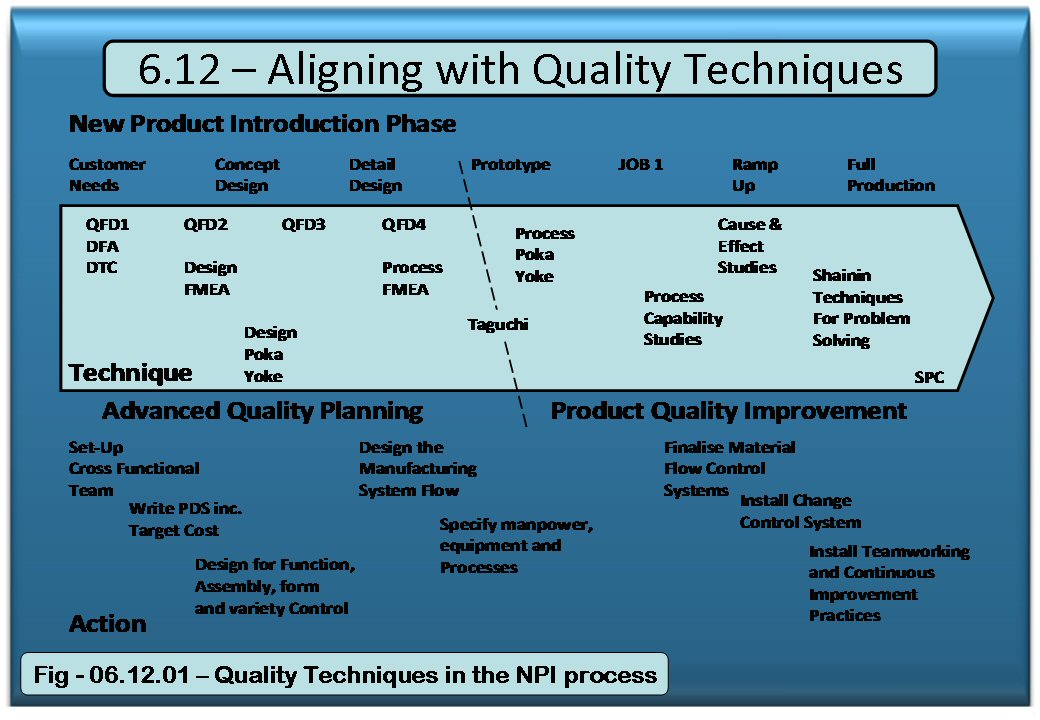6.12 - Aligning with Quality Techniques
Overview
A set of mutually supportable techniques which facilitate the full utilisation of all skills and experience in a New Product Introduction team is available:-

Advanced Quality Planning
The prevention of failures is critical to achieving customer satisfaction by considering product quality sufficiently early in the design phase of the product life cycle. A team based approach that proactively uses tools to promote robust product and process characteristics through the understanding of manufacturing capability and the product operating environment.
Advanced Quality Planning provides the understanding of critical design and process parameters by which to control appropriate characteristics, confirm nominal sizes and tolerances. Emphasis is then placed on prevention, focusing on recommended process controls on critical characteristics and hence minimising the need for inspection.
Product Quality Improvement
A product Quality Improvement Methodology is needed to improve the quality of products at the post-prototype and manufacturing stages. The targets be applied to existing products with a view to improving manufacturing processes and aid product re-designs as well as ensuring existing products are designed for manufacture.
An investigation into the main causes of variation for a product or process is carried out by looking for trends and patterns. These are then eliminated, making the product robust and insensitive to variation. There must be a system for improving, monitoring and controlling process performance after improvements have been implemented.
The techniques shown in the diagram above are found in the following parts of this guide:
Technique |
Reference |
QFD |
6.07 & 6.08 |
Design for Assembly (DFA) |
6.09 |
Design to Target Cost (DTC) |
6.11 |
FMEA |
5.30 |
Poka Yoke |
5.31 |
Taguchi |
6.06 |
Process Capability |
4.14 |
Cause & Effect (Ishikawa) |
5.34 |
Shainin Techniques |
5.32 |
| |
|
See also Analytical Thinking Process - 2.14